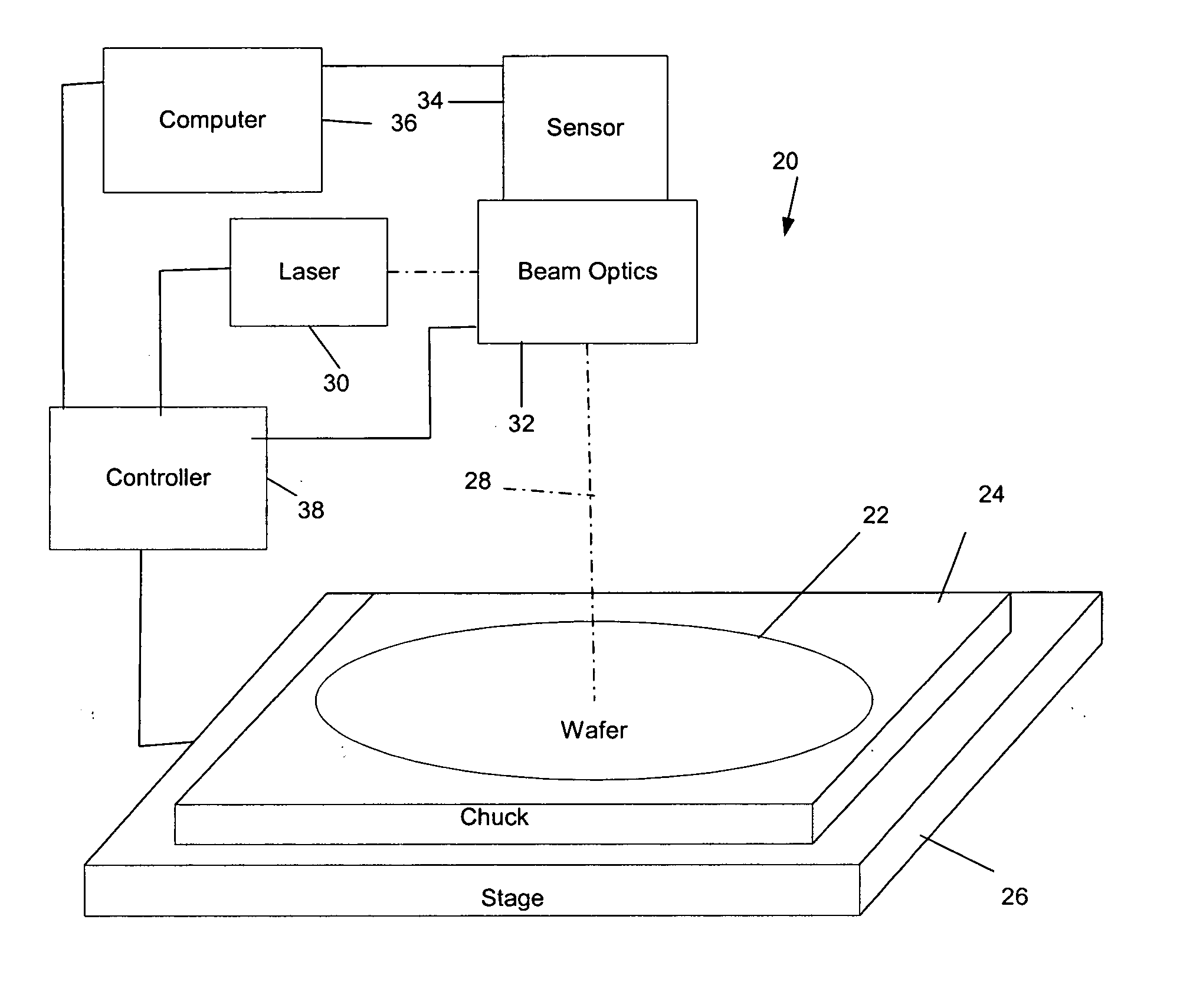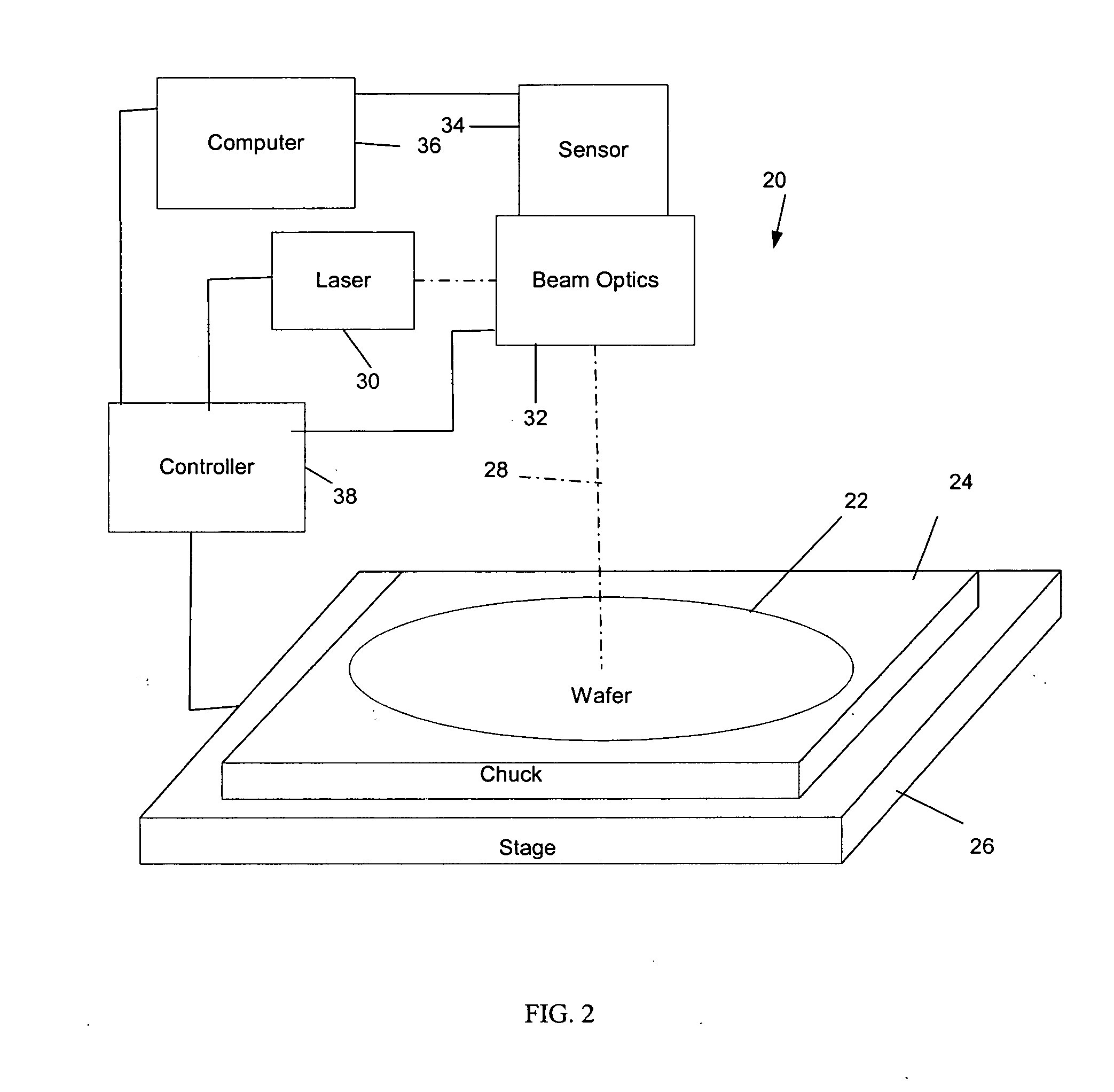Method for correcting systematic errors in a laser processing system
- Summary
- Abstract
- Description
- Claims
- Application Information
AI Technical Summary
Benefits of technology
Problems solved by technology
Method used
Image
Examples
Embodiment Construction
[0025] In a preferred embodiment, a silicon wafer is fixed in place in a chuck and positioned with respect to a laser beam that will be pulsed for incidence on micromachine fusible links on the surface of the wafer. In this case, several factors can cause variations in the X, Y, and Z accuracy of a laser micromachining system. Accuracy is a function of the relationship between the laser beam and the workpiece. The relationship between the laser beam and the workpiece is a function of several moving parts, optics, and the workpiece, each with its own sources of error. For instance, in a preferred embodiment, the wafer chuck may be attached to an X, Y table that moves the wafer under the laser beam to position it at a desired location on the wafer. Alignment of the X and Y axes to each other and alignment of the plane formed by the X and Y axes, in addition to possible errors in travel along each axis, all contribute to errors attributable to the chuck motion control, among other poss...
PUM
| Property | Measurement | Unit |
|---|---|---|
| Size | aaaaa | aaaaa |
| Density | aaaaa | aaaaa |
| Bending strength | aaaaa | aaaaa |
Abstract
Description
Claims
Application Information
 Login to View More
Login to View More - R&D
- Intellectual Property
- Life Sciences
- Materials
- Tech Scout
- Unparalleled Data Quality
- Higher Quality Content
- 60% Fewer Hallucinations
Browse by: Latest US Patents, China's latest patents, Technical Efficacy Thesaurus, Application Domain, Technology Topic, Popular Technical Reports.
© 2025 PatSnap. All rights reserved.Legal|Privacy policy|Modern Slavery Act Transparency Statement|Sitemap|About US| Contact US: help@patsnap.com



